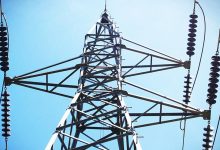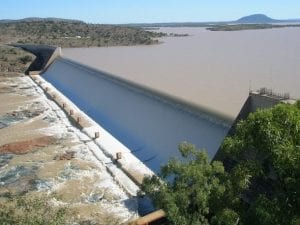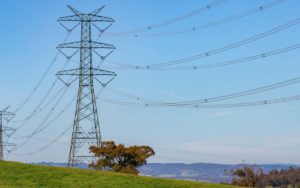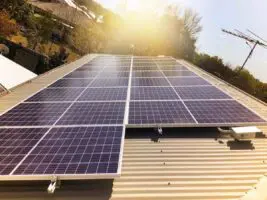The AEMC is proposing a seemingly profound rule change that will have an unknown impact on the NEM electricity market. It’s a series of linked complicated rule changes designed to solve what most would see as a simple problem.
In this note we take a (very) negative view of the proposal. At the very least now is the time to be critical. The AEMC is set on its path and history shows that once a regulatory body is on the journey home it takes a lot to turn its head. Although we cannot say the COGATI process is being hidden its fair to say its had next to no mainstream publicity. This note is already long but still does no more than introduce the topic.
The problem Australians face is that electricity transmission is not in the right place for a generation system dominated by renewable energy rather than coal. Some new transmission needs to be built, quickly, and other transmission links need to be augmented, quickly. Insufficient transmission means MLF factors get bounced around as new generators crowd out the existing transmission from year to year.
Insufficient transmission also means that there is a queue of relatively easy and fast to build wind and solar plants that have no easy way to connect to the grid. New transmission takes years to plan and build.
Insufficient transmission exposes net importing regions such as NSW to energy security risk. Insufficient intrastate transmission in NSW exposes consumers to the risk of insufficient generation spare capacity within the State to deal with extended problems or early closure of one of the 4 post 2022 coal plants left in the State.
In many jurisdictions this would be seen as something where some central planning, some seed Govt investment and a consensus on what works would produce a simple and straightforward answer. Build the transmission and wait for the generation to come in behind it. This worked really well in Texas, home of the free market. The ESB and AEMO propose a planned, centrally driven approach as indicated by the ESB’s proposed transmission fund.
But in John Pierce’s AEMC that’s far too straight forward. Virtually communism. OK enough hyperbole.
According to the AEMC what we need is a new system where the entire generation and transmission system needs to be remodeled to make it even more complex than it already is. MLF factors should be calculated every five minutes.
A system where central planning is relegated even further into the background. A system where regulated transmission is replaced by cartels of generators working out what transmission needs to be built and then monopolizing access to it. Sort of like gas transmission.
Transmission, a small part of customer bills that benefits from regulatory certainty and a low cost of capital will have to get returns on capital that generators require.
Where we see a need for government and the system operators to take a fast policy and planning driven lead the AEMC sees a need for major market reform coupled with all of its complexity and cost. he AEMC doesn’t consider costs and benefits of various approaches. It provides little or no evidence. Not good enough in our view.
Would the South Australia NSW interconnect ever get built under the proposed model?
Building new transmission will relieve congestion on some existing transmission lines and provide scope to built more generation.
For instance the proposed new South Australia – NSW interconnector will improve security in the NEM, improve security in both South Australia and NSW, facilitate the transport of excess South Australian renewable electricity to coal heavy NSW and allow NSW coal generators to replace more expensive gas in South Australia in the evening peak.
It will also allow new renewable generation to be built along its route, about 800 MW from memory. How good is that?
Do you need a complicated market structure, a group of generators both existing and potential, purchasing “firm transmission generation rights” and “dynamic regional pricing” to justify this investment? I would argue not. Does it matter in the bigger scheme of things whether households pay the same, slightly less or slightly more as a result of this link being built?
Again I would controversially argue it doesn’t matter much. The link improves the overall security of the grid makes South Australia a more connected part of the NEM and opens up new opportunities. That is enough.
According to the AEMC the new system is needed for two main reasons.
1. The risk that generators game the system to get dispatched. The only evidence in the whole Directions paper on costs benefits shows that a 2013 study found $9 m of NPV costs over 18 years from this behavior. That’s $9 m relative to 200 TWh x $80 MWh or $16 bn of wholesale energy sold in the NEM each year. Effectively that cost was estimated by ROAM consulting at zero for all intents and purposes; ZERO see page 40. Does this kind of evidence impact the AEMC? No it does not, despite the evidence the site the gaming risk on many occasions.
2. The risk that consumers may have to pay for some unnecessary transmission. Zero evidence is presented that there has so far been any unnecessary transmission built. Quite the reverse, we argue that consumers are overpaying because not enough transmission has been built. Clear evidence of this emerges from the South Australia NSW interconnect which even the RIR-T test shows net benefits.
Under the current system its nearly impossible to overpay for transmission because its nearly impossible to satisfy the RIT-T test. That test requires net benefits to consumers after thinking about the position of consumers a both ends of the proposed link. The test doesn’t even consider decarbonization goals any more than the National Electricity Objective does.
COGATI’s new system
The policy proposal and background is presented in: COGATI Directions Paper Coordination of Generation and Transmission Investment Access Reform issued June 27
This directions paper proposes
1. That generators receive a “dynamic regional price” rather than regional reference price;
2. Creating a market for generation transmission hedges;
3. Transferring transmission planning such that its driven by generator hedges. The AEMC claims without presenting a shred of evidence that this will lower the costs of transmission investment. In fact by shifting transmission investment from a low cost of capital regulated network provider to a high cost of capital generator it seems to me just as likely to raise the cost of transmission.
4. The ACCC has spent year s investigating APA which runs gas transmission in more or less the fashion the AEMC wants to move electricity transmission to.
- 5. These arrangements are proposed to come into effect in July 2022
Never mind the ESB market design process, never mind the ISP, never mind renewable energy zones, never mind the fact that the industry, based on what I am told hates the idea, never mind the lack of evidence, never mind the raising of straw men, if it looks good to John Pierce that’s what’s going to happen.
“Dynamic regional prices”
Dynamic Regional Prices are supposed to provide transparency and visibility of the costs of congestion and improve locational signals for new generation.
Today a generator receives:
R = RRP * V
Where: R = Revenue; RRP = Regional Reference price; V = Volume dispatched.
The AEMC proposes to change this to:
R = LMP x V +(RRP- LMP) x H
Where: LMP = Location marginal price, H = Transmission hedge quantity
The AEMC states that under the current system generators face volume risk due to transmission constraints. That’s true. Its just that, in the author’s opinion, the way to remove that risk is to build some more transmission. You don’t need a super fancy system to solve a simple problem.
Dynamic regional pricing seems to be a variation of nodal pricing
Dynamic regional pricing it seems to me is just a variation of nodal pricing. The AEMC last reviewed this in 2008 and there was a thorough Nodal pricing review by Frontier Economics. Frontier noted at the time in reviewing the experience in PJM, New Zealand, New York, New England, Singapore that the allocation auction process tends to be complex and involved for both market operators and particpants as well as time consuming and expensive.
I’d have thought the AEMC could at the least have provided some estimates of the costs and benefits in monetary terms of its proposals
The Frontier Economics report noted that in the USA markets where nodal pricing exists its potential to lead to market power was offset by safeguard mechanisms and the existence of capacity markets.
Space does not permit further discussion of the Frontier Report but it’s a good read for people like myself without a real life.
Show me the evidence
At page 99 the “Directions paper” states that
“ A key objective of the COGATI reforms is to minimise the risk of consumers carrying the risk of inefficient transmission investment decisions.”
1. At a minimum I’d have expected to see some quantification of the costs and benefits of the proposed reform as compared to the alternative of a more centrally planned and executed transmission system. Its our view that the risk of stranded transmission assets is pretty low
2. The AEMC appears to have ignored the case for a centrally planned transmission system that could be embodied in the ISP and built out on a consensus basis. The AEMC “should” have considered the costs and benefits of this approach as opposed to its market lead approach rather than just stating its ideological preference for market based solutions no matter their complexity.
3. The AEMC has not considered whether transmission owners or generators have lower costs of capital.
4. A viable alternative exists, namely building, with the aid of the proposed ESB fund, transmission links to various REZ and then recovering that investment over time as generation is built. Implicitly the AEMC is saying it doesn’t have confidence the renewable generation will be built. Implicitly this is because there is no decarbonization objective in the National Electricity Law. If you accept that the thermal generation is going to go away over the next 15 years then replacement supply needs to be built in front of those closures. However that replacement generation can’t be built without transmission. Building, with ESB and AEMO support, new transmission links would in fact provide the private sector with confidence and, based on overseas evidence, yes evidence, result in new generation being built. There is evidence that a centrally planned approach works, see Texas..
An example of AEMC thinking
At page 21 the Directions paper states:
“Under the final access regime, transmission investment costs would no longer be recovered solely from consumers through TUOS charges. A portion of these costs would instead be collected from generators through the purchase of hedging products. This means that the TUOS component of a customer’s bill should decrease.”
Even a high school economics student would understand that consumers will also have to pay the transmission costs incurred by the generator. These could be higher or lower than regulated costs. ITK’s preliminary view is that they may well be higher but who really knows.
In any case transmission costs are not that high in total around about 8% of final household bills last time I looked. I would argue that the priority is to get new transmission built rather than trying to force a semi public good into an ideological pigeon hole of private investment.
Stakeholders are far from supportive
The AEMC directions paper notes that “ Several generators, networks and equity investors were opposed to considering transmission hedging for generators.” Actually it’s a bit stronger than that, AEMO and Tasnetworks are opposed. AEMOs views, which to me seem like common sense were stated in the Directions paper as:
“AEMO and TasNetworks noted that all international power systems continue to rely on a high degree of centralised coordination and decision-making. They were of the view that this international experience suggests that, due to the episodic and lumpy nature of transmission investment, the cumulative decisions of disparate commercial investors have not delivered optimal transmission investment.
AEMO considered that the NEM should be designed to incorporate the commercial decisions of market players so far as possible, but it should also use other sources of information to determine the optimal development of the power system. Changes to the access regime should enhance, rather than replace, the planning regime through the provision of clearer locational signals and the ability of generators to invest in transmission access.”
The AEMC states:
-
Under the current regime, the fact that transmission network and generation investment decisions occur under different processes has the potential to result in development that does not minimise the total system costs faced by consumers. Additionally, no individual generator is able to guarantee that they will receive value from shared network assets, even if the generator underwrote the investment in the asset, creating a free-rider problem. As a consequence of these two factors, consumers bear the risks of transmission investment decisions being incorrect”
However the AEMC provides no evidence of incorrect decisions or the cost of them.
Transmission planning at first blush seems to be a dogs breakfast under the proposed system. The AEMC states
- Transmission hedges would fund and guide the development of new network assets.
- TNSPs plan their network and are subject to a new planning standard in order to meet the aggregate network capacity of transmission hedges sold.
- Reliability standards still apply
- Transmissionm investments are assessed through a cost-benefit process, consistent with actioning the ISP.
The AEMC considers that there still needs to be an Annual Planning Report and an RIT-T. So to me this looks like a more complicated planning environment.
Another risable view
While developing transmission to some renewable energy zones as shared transmission assets may be able to be justified through the RIT-T process, others may not. This is because renewable energy zones often involve a relatively large element of speculation as, by definition, generation has not yet connected and so is not considered committed. Therefore, it is harder for the benefits of extending the existing transmission system to be justified. – p82
We agree the RIT-T process is flawed. We just draw a different conclusion to the AEMC. We draw a similar conclusion to the ESB and AEMO namely that there is a need for Government to take an infrastructure build lead, or use the ESB’s proposed transmission fund. We think this would be quicker, cheaper and more efficient than AE MC’s complex proposal.
The AEMC states that coordination is important but then ignores it
The AEMC however doesn’t demonstrate how its reform proposals will improve co-ordination or lead to lower execution and administration costs. In fact the de-emphasizing of the role of the ISP is arguably one of the more contentious features of the proposal. At pargraphs 21-24 the Directions paper starts about by talking about coordination but basically ends up talking about the transition period and once again just states a conclusion, “should manifest in the form of increased revenue certainty for generators as well as lower system costs for consumers” without providing evidence.









